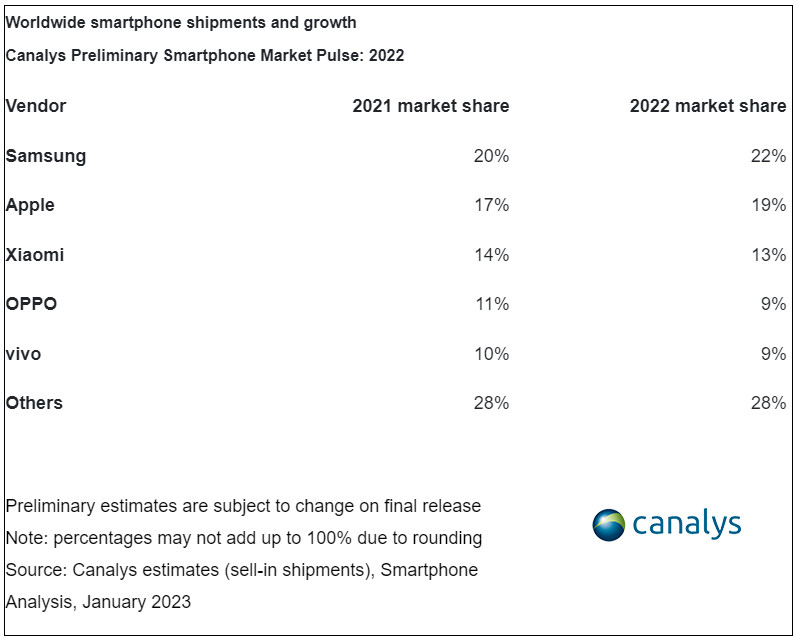Affiliate links on Android Authority may earn us a commission. Learn more.
Apple won the battle, but Samsung won the war in 2022
Published onJanuary 18, 2023

- Apple was the number one smartphone brand for Q4 2022, according to Canalys.
- Samsung took the top spot for 2022 as a whole, though.
It seemed like a rather tough year for the global smartphone market in 2022, with several quarters resulting in major declines across the board. Now, tracking firm Canalys has dished out results for Q4 2022 and the full year.
Canalys reported that shipments declined by 17% in Q4 2022 alone and by 11% for the year. In fact, the firm said the Q4 drop was the worst performance for the smartphone market in over a decade.
The company also shed light on the performance of various smartphone brands in Q4 2022 and for the full year at large.
Q4 2022: Apple rules the roost
Canalys noted that Apple emerged on top in Q4, accruing 25% market share. This was Apple’s highest-ever market share for a quarter, and comes despite the company facing serious production challenges.
Samsung accounted for 20% market share for the quarter, coming in second place. Xiaomi rounded out the top three with 11% market share for the quarter, down from 13% a year ago. Canalys cited India-related challenges for Xiaomi’s declining share.
Otherwise, OPPO and vivo accounted for 10% and 8% market share during the quarter respectively. OPPO’s results were particularly interesting, and suggests the firm might be able to pass Xiaomi for third place if it can maintain this momentum.
Full year 2022: Samsung emerges ahead
Looking at 2022 as a whole, Canalys reported that Samsung was the number one brand with a 22% share. Apple, on the other hand, was in second place with 19% market share. Xiaomi completed the top three with 13% market share for the year. Meanwhile, OPPO and vivo were neck-and-neck for the year with 9% market share each.
Otherwise, the tracking firm reckons that we could see marginal growth at best in 2023.
“Though inflationary pressures will gradually ease, the effects of interest rate hikes, economic slowdowns and an increasingly struggling labor market will limit the market’s potential,” said analyst Le Xuan Chiew, adding that this would affect markets like Western Europe and North America.

